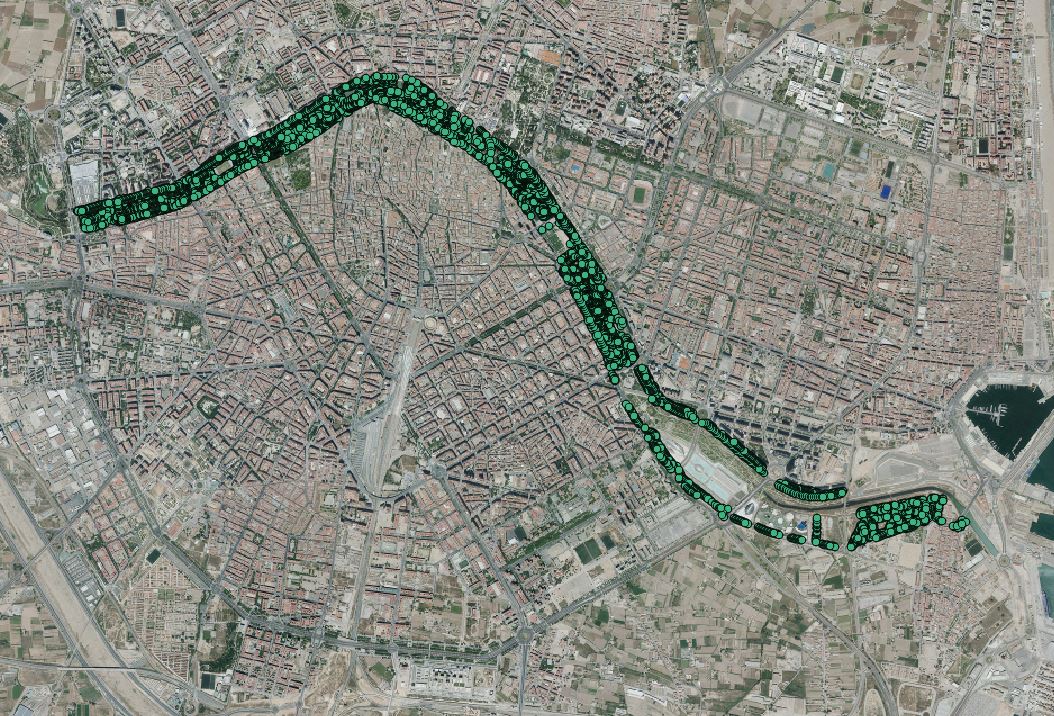Candela Martín Blanco (candelamartinblanco@gmail.com)
Throughout history different populations have settled in areas close to riverbeds. Due to the great advantages provided by this type of location. There are some cities that have developed urbanistically around this first settlement. Therefore, conflicts with urban rivers and their corresponding incidents are commonplace. But well, is the conflict hydrological or urban type?
There are hydrological problems due to anthropic actions and urban pressure that sometimes exists on the environment of the rivers.
From the point of view of the planning, it should be mentioned that urban riverbeds are sometimes modificated, using the old trace for other uses. Two examples related to this type of action would be that of “Madrid Río” and “El Jardín del Turia”.
The development of the automobile together with the demographic and urban growth of Madrid originated to the creation of new infrastructures. The construction of the M-30 began in the 1970s, and its last section was completed in the 1990s. This action created a separation between various neighborhoods in Madrid and between these with the Manzanares River.
A section of this great urban highway was located near the Manzanares River, modifying the environment of the riverbed. The landscape of this area is completely modified and negative impacts appear derived from the numerous traffic that this road has.
In 2003 the modification of the M-30 road is planned. Several changes are made, highlighting that the section near the Manzanares River is moving, generating a new space on the banks of the channel.
In 2007, the hiding of a section of Calle 30 had been completed. Until 2012, construction continued slowly.
The Madrid Río project aimed to create a new urban space on the banks of the Manzanares River. In this way the continuity of the neighborhoods would be favored, and the idea of adapting the city to the river too. In addition, it would be positive from the point of view of biodiversity and it will promote active mobility in this area, creating an attractive space for pedestrians. In 2016 most of the works had been completed and “El Plan de Renaturalización y Restauración Ambiental” is being carried out.

Figure 1. Madrid Río (2021).
* Another case study would be the Turia River.
The consecutive floods produced by this river over the years promoted the idea of modifiying its course, these ideas came from around 1900. The catastrophe that took place in 1957, due to one of these floods, led to it being finally carried out this idea. The modification of the channel was associated with an environmental and urban change of great importance.
At first, it was planned to reuse this old trace of the channel for the construction of a highway, just like in the General Urban Planning Plan of Valencia approved in 1966. This idea caused great controversy among the population, and was the result of numerous demonstrations and protests by citizens.
In 1977, it was decided to use the bed of the old river as a large urban park together with infrastructures of the urban road network. In this year the Pro-Cauce Citizen Commission was formed. They fought to that the river bed became only a large urban park, without sharing this space with other uses and requested more citizen participation. Finally, the city council turned out the exclusive use of this area as a green area, “El Jardín del Turia”.

Figure 2. Jardín del Turia. Source: Own elaboration.
The work that take part about 12 km of the corresponding channel, took three decades to develop. In fact, nowadays, the work is not completely finished.
The two cases present common ideas.
In the first place, both rivers were a place of settlement of the cities in which they were found, being places of great interest and importance throughout history. The growth and development of both cities has had an impact on both. In addition, a similarity is that interventions have been carried out in the two urban rivers and they have been projects of great controversy between citizens and different experts.
On the other hand, there are many differences between the two performances.
The main difference is that in the Manzanares River the trace has not been modified and in the Turia River the channel has been moved from its place.
The Madrid Río project has benefited the connection of the different neighborhoods, which had been separated with the construction of the M-30. In addition, an attempt has been made to recover the landscape of the river and its banks. The increase in biodiversity has been favored. In conclusion, the measures adopted have tried to include the river in the city, giving it importance and trying to recover the firts landscape, because at present it would not be the same.
Instead, part of the Turia River channel has moved. In this case, the park that has been built on this site has completely changed the use and purpose of the riverbed. The measures adopted in this case have favored the forget of the river. Therefore, the river has not been included in the city. The landscape that has look for has been mainly of a green area included in the city. There has been no fight for the recovery of the river landscape and its environment.
In conclusion, interventions in urban rivers and urban planning in their surroundings must be carried out taking into account ecological interests and possible anthropic effects. In addition, the creation of green or recreational spaces can generate a false recreation of nature or a good environmental practice. But is it really natural to modify the trace of a river?
